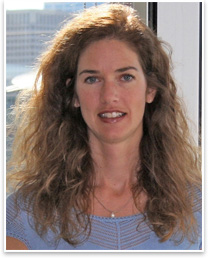A “Young” Architect’s Perspective
Start small, work in the field, be willing to adapt
by Julie Cook, AIA
Summary: It’s been more than 15 years since receiving my first degree in architecture, but many people still consider me a young architect. As one of only a handful of females in my graduating class at The Ohio State University, I’ve always had a different perspective of the architecture industry. My “just starting out” status coupled with my minority gender in the profession provides me with a unique view on the current–and anticipated future–state of the industry.

Julie Cook, AIA
BIM technology
Since joining the industry, use of Building Information Modeling (BIM) has exploded, resulting in significant successes both for the architect as well as the client. BIM makes it easier for architects to communicate and interpret projects for their clients, while clients get more value for their dollar and, ultimately, a better design. The technology also allows architects to more effectively incorporate sustainable design principles into their buildings, as well as to understand the implications of differing systems, helping provide for a wholly integrated building design.
Based on my experiences using BIM, it’s clear that it will only become stronger for all groups, including architects, engineers and, of course, the client. It will continue to evolve, enabling the architect to produce a continually better product.
Sustainable design
Throughout my experience as a student in architecture school in the mid 1990s, I always found sustainable design to be emphasized in the curriculum, especially in regard to critical areas such as day lighting and material selection–but not nearly to the degree that we see today, where the terms “LEED®” and “green design” are widely known and quite the buzz in the profession. There were few and less accessible resources for sustainable design during my time as a student. But now, programs are extensively available to become a LEED accredited professional, as well as for continuing education.
With LEED transforming the building market, the concept of green design is here to stay, and sustainable design will only continue to become bigger and better. However, the process that architects use to implement green design will change. Architects will have to stay on top of LEED standards, because the parameters will continue to evolve. And, as the LEED concept continues to evolve, the standards, too, will become higher, whether involving new materials, new building designs, or preexisting facilities. In fact, it might be just a matter of time before current LEED standards are required for all buildings.
Advice for architects just getting started
Throughout my 15 years in the industry, I’ve garnered valuable insight into what architects should do as they start out in the profession. First and foremost, the young architect should put him or herself in the position to work on smaller-scale projects. While the budget and overall complexity might be limited, working on smaller projects gives an architect the opportunity to experience all aspects of the project and understand how buildings are put together. When working on larger scale projects, in many cases the architect will only focus on one minuscule area of the building, such as vertical circulation or even toilets. However, by working on smaller projects, the architect is forced to not only pay attention to the details required of working on a small area of a project, but will also learn how to take a project from beginning to end.
Secondly, work in the field or visit construction sites. After receiving my Masters in 2001, I had the opportunity to work on a 600,000-square-foot, $153 million collegiate recreation facility project during the design phase and follow it into construction as a construction administrator. The project entailed overseeing 36 contractors and being on-site for more than two years. The experience undoubtedly strengthened my management and problem solving skills, as well as built my overall confidence in coordinating projects. The perspective and knowledge gained from being in the field is completely different from being behind the scenes in the office. The result is better understanding of needs and methods to deliver an overall better product and outstanding design.
Though tools of the trade and practices of the profession are ever evolving, this change is also what keeps the industry buoyant. As the industry resurfaces out of the past year’s recession, it’s especially important for the young architect to continually build on his or her foundation of education and field experience, and to adapt and engage new technologies and design processes.
|


